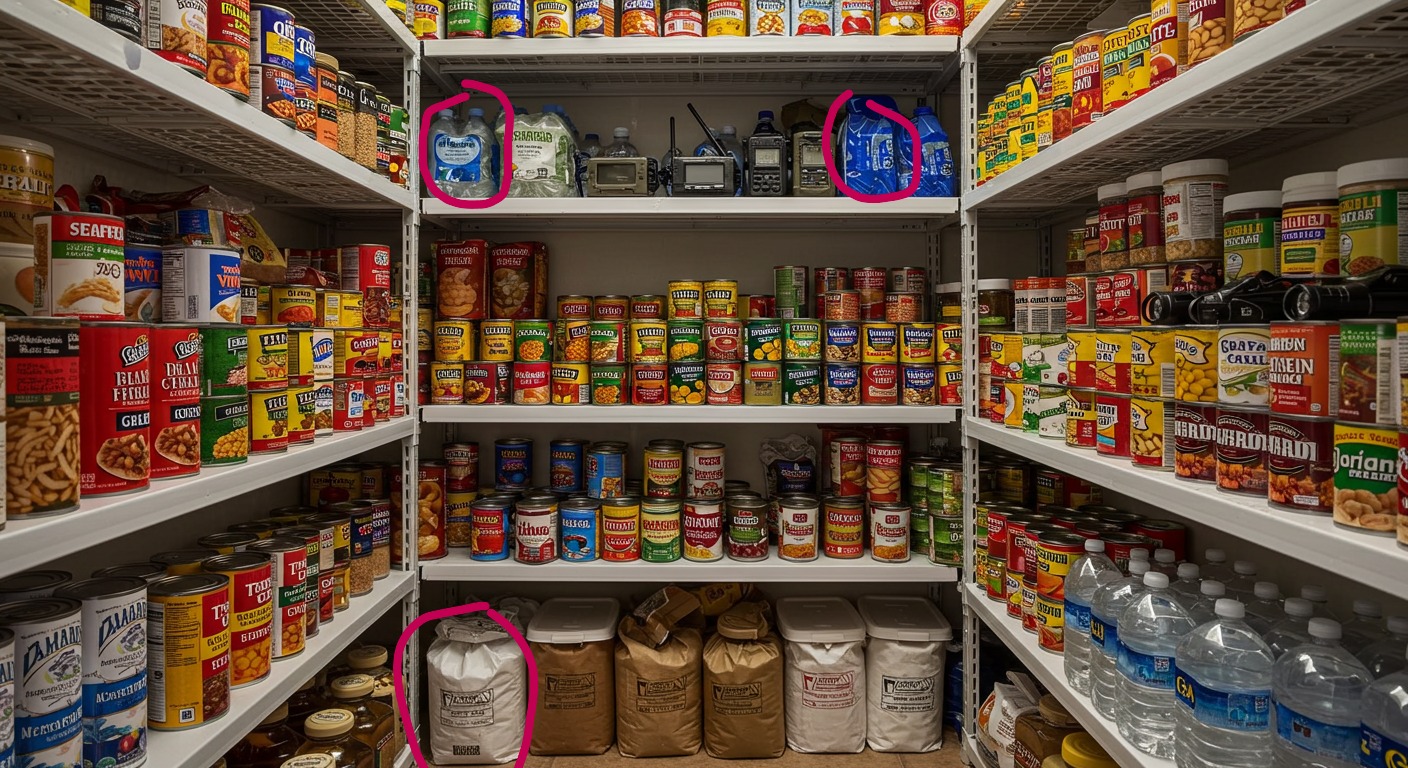Recent years have taught us a critical lesson: the stability of our supply chains is not guaranteed. From inflation and shipping issues to global disasters, it’s not a matter of if, but when things will run out. When shelves are bare and prices skyrocket, those who stocked up ahead of time will be in a much better position.
Stockpiling essential pantry staples while they are affordable isn’t just about feeding yourself; it’s about building security and barter value for a time when scarcity is the new normal.
The Prepper’s Pantry: Essential Staples
Rice & Dry Beans
These two items are the foundation of any long-term food supply. They are cheap, calorie-dense, and have an incredible shelf life.
- Rice: White rice varieties like jasmine, long-grain, and arborio can last for up to 30 years when properly stored in Mylar bags with oxygen absorbers. It’s easy to cook and incredibly versatile. Avoid brown rice, as its natural oils cause it to go rancid much faster.
- Dry Beans & Lentils: These are packed with protein, fiber, and nutrients, making them a cornerstone of a survival diet. Stock a variety to add nutrition and culinary interest to your meals. Pinto beans, black beans, chickpeas, and lentils are all excellent choices. Store them in airtight containers, such as Mylar bags or food-grade buckets, in a cool, dark, and dry place.
Canned Meat & Fish
In a crisis, a reliable source of protein is vital. Canned meats and fish are an excellent choice because they are shelf-stable, nutrient-dense, and ready-to-eat.
- Canned Tuna & Salmon: Both are packed with protein and omega-3s. Tuna typically lasts 3–5 years, while salmon can last up to 5 years.
- Canned Chicken: This is a versatile, mild-flavored protein that can be used to bulk up soups, casseroles, and salads. It has a shelf life of up to 5 years.
- Spam: A ready-to-eat, calorie-dense protein with a shelf life of 5–10 years. It’s extremely versatile and works well fried, in sandwiches, or added to hearty meals.
Cooking Oils & Essential Fats
Fats are often overlooked but are critical for a survival diet. They provide dense calories and are necessary for your body to absorb certain nutrients.
- Coconut Oil: Unrefined coconut oil can last up to 5 years. It is solid at room temperature and stable for high-heat cooking. It can also be used for skin and medical applications.
- Olive Oil: A great source of healthy fats, but it has a shorter shelf life of about 1–2 years. It must be stored in a cool, dark place to prevent it from going rancid.
- Lard: A traditional animal fat that’s excellent for frying and baking. When properly rendered and stored, it can last for a year or more.
- Tip: Store all oils and fats in a cool, dark place away from light and extreme temperatures.
Powdered & Shelf-Stable Dairy
Fresh dairy will be one of the first things to disappear in a crisis. Powdered and shelf-stable options are a must-have for a complete pantry.
- Powdered Milk: High in calcium, protein, and fat, powdered milk can last for years. Just add water to rehydrate it for drinking, cooking, and baking.
- Evaporated & Condensed Milk: These canned items are a great source of dairy and have a long shelf life.
- The Doomsday Ration: During the Cold War, the US government developed a “doomsday ration” that included survival biscuits made from flour, vegetable fats, and powdered milk, proving its value in a long-term crisis.
Dehydrated & Freeze-Dried Meals
While more expensive, these meals are an invaluable asset. They are lightweight, have an extremely long shelf life, and require minimal fuel and time to prepare.
- Value: These meals save time and energy, which are precious resources in an emergency. They also have a recognized barter value, making them a useful trade item.
- Placement: It’s smart to have a few of these in every bug-out bag and emergency backpack for a quick, reliable meal.
Coffee, Tea, & Pasta
These items aren’t strictly necessary for survival, but they are crucial for morale and have high barter value.
- Coffee & Tea: Caffeine can boost energy and morale. Vacuum-sealed bricks of coffee can last for up to two years. Your neighbors might be willing to trade valuable items for a cup of coffee in a long-term disaster.
- Pasta & Instant Grains: Pasta is cheap, filling, and a great comfort food. It cooks quickly and pairs well with canned goods. It also has high barter potential.
Multivitamins
While not a food item, multivitamins are an essential part of a complete survival pantry. Canned and preserved meals can be lacking in key nutrients. A good multivitamin will help fill in the nutritional gaps during a prolonged crisis.
Final Thoughts
The growing instability of our world and the increasing threat of a water crisis means that preparing is no longer optional. Stocking your pantry with these essential staples and securing your own water supply can put you miles ahead of the rest.
